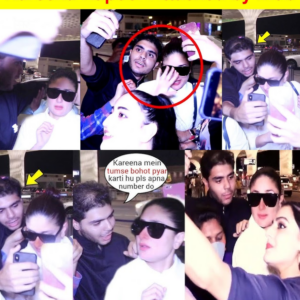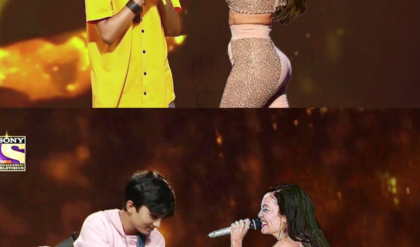AR Rahman: A Journey Through 29 Years of Musical Excellence and Personal Growth
In a career spanning nearly three decades, AR Rahman, known as the “Mozart of Madras,” has redefined the landscape of Indian music, both in Bollywood and globally. From his humble beginnings in Chennai to becoming a global icon, Rahman’s journey is a testament to passion, perseverance, and a commitment to his craft. Rahman, born on January 6, 1967, in Chennai, Tamil Nadu, has not only mastered the art of composing music but has also used his platform to bring awareness to important social issues, from spirituality to education.
As he opened up about his journey through 29 years, Rahman reflected on his early days, the challenges he faced, the transformative experiences that shaped his career, and the incredible highs that have defined his legacy. From creating music for films to his transition to international acclaim, Rahman’s evolution has been nothing short of remarkable. This article will delve into the details of Rahman’s 29-year journey, highlighting key moments, his influence on music, and his personal experiences that have made him an iconic figure in the entertainment industry.
1. Early Life and Musical Roots
AR Rahman’s story begins in Chennai, where he was born as A. S. Dileep Kumar. His early life was marked by tragedy when his father, a composer and conductor for All India Radio, passed away when Rahman was just nine years old. This loss deeply affected him and led Rahman to explore music as both a form of expression and a means of healing. His mother, a strong influence in his life, encouraged him to pursue music, and Rahman soon began studying Western classical music under the guidance of teacher Ilaiyaraaja.
Rahman’s musical journey truly began when he studied at the Trinity College of Music in London, one of the most prestigious music institutions in the world. Rahman’s academic background in music provided him with a solid foundation in both Western and Eastern styles, and this unique blend would later define his music. Rahman’s early years were filled with intense practice and study, but they also laid the groundwork for the successful career that awaited him in the film industry.
In his interviews, Rahman has often spoken about how his father’s death left an emotional void in his life. Music became not only his refuge but also a form of therapy. He immersed himself in the world of sound, experimenting with different instruments and synthesizers, which would later become part of his signature style. Despite his early struggles, Rahman’s raw talent and determination began to shine through.
2. The Breakthrough: Roja (1992)
While Rahman had worked on numerous ad jingles and documentaries, his breakthrough in the Indian film industry came with the 1992 film Roja, directed by Mani Ratnam. Roja was a game-changer, both for Rahman and for the Indian film music industry. Rahman’s composition for the film, which included the now-iconic tracks “Chupke Chupke” and “Roja Janeman,” blended classical music with electronic sounds, creating a unique and refreshing soundscape that was entirely new to Indian audiences.
The success of Roja was unprecedented, and Rahman’s innovative music quickly earned him a reputation as a fresh and talented composer. His ability to merge the traditional with the modern resonated with a wide range of audiences, earning him a devoted following. At the age of 25, Rahman had already made an indelible mark on Indian cinema, and the accolades poured in.
However, what made Roja even more remarkable was that Rahman’s music transcended regional boundaries. The soundtrack was not only a hit in Tamil Nadu but also enjoyed success in the Hindi and international markets, marking the beginning of Rahman’s journey as a global music sensation. The film’s music not only showcased his deep understanding of classical Indian music but also his ability to experiment with Western and electronic elements.
3. The 1990s: A Decade of Milestones
The 1990s proved to be a decade of exponential growth for AR Rahman. After Roja, he collaborated with some of the biggest names in the Indian film industry, creating music for films like Bombay (1995), Dil Se (1998), and Taal (1999). With each film, Rahman’s musical range expanded, and his compositions grew more intricate and nuanced.
In Bombay, Rahman captured the emotional intensity of the film’s subject matter, using his music to create a poignant and haunting atmosphere. Tracks like “Hamma Hamma” and “Hasi Ban Gaye” became instant classics. Dil Se, a collaboration with director Mani Ratnam, was another milestone in Rahman’s career. The film’s soundtrack, particularly the iconic “Chaiyya Chaiyya,” was a massive hit and showcased Rahman’s ability to craft energetic and memorable tracks that resonated with audiences worldwide.
Dil Se also marked Rahman’s foray into Bollywood, and the success of the film cemented his position as one of the most sought-after composers in the industry. Rahman’s music was now being appreciated not only for its technical brilliance but also for its ability to evoke deep emotions. His collaborations with renowned singers like Udit Narayan, Hariharan, and Sadhana Sargam further elevated his music, making it even more accessible to mainstream audiences.
Throughout the 1990s, Rahman’s music became synonymous with cinematic excellence. He infused traditional Indian sounds with contemporary styles, creating a unique blend that was both innovative and deeply rooted in Indian culture. His ability to merge different genres—whether it was the classical rhythms of Lagaan (2001) or the contemporary electronica of Dil Se—was one of the factors that set him apart from other composers in the industry.
4. International Recognition and Oscar Win
While Rahman’s success in India was undeniable, it was his international recognition that truly elevated his career. His music for the 2008 film Slumdog Millionaire catapulted him onto the global stage. Directed by Danny Boyle, Slumdog Millionaire was an international sensation, and Rahman’s soundtrack played a crucial role in its success. His tracks, including “Jai Ho” and “O Saya,” captured the spirit of the film and became global anthems.
In 2009, AR Rahman achieved one of the greatest honors of his career when he won two Academy Awards (Oscars) for Best Original Score and Best Original Song for Slumdog Millionaire. This recognition was a defining moment not only for Rahman but also for Indian cinema, as it marked the first time an Indian composer had won an Oscar in a competitive category. The win was a testament to his unparalleled talent and ability to bridge cultural divides through music.
The Oscars win opened doors for Rahman in the global music industry, and he soon began collaborating with international artists, film directors, and music producers. His fame extended beyond Bollywood, and Rahman’s music began to be appreciated worldwide. He became a global ambassador for Indian music, bringing Indian sounds to the forefront of international cinema and music.
5. AR Rahman’s Evolution as an Artist
Despite his global fame, Rahman has remained grounded in his roots. His music, while evolving, continues to retain the essence of his cultural heritage. As an artist, Rahman has been able to evolve with the times, experimenting with different genres and instruments. From the classical influences in his early works to his use of electronic music and world fusion styles, Rahman’s compositions have always been a reflection of his willingness to explore and innovate.
Rahman’s influence on film music has been profound. His collaborations with directors like Mani Ratnam, Rajkumar Hirani, and Ashutosh Gowariker have resulted in some of the most memorable soundtracks in Indian cinema. His ability to adapt his style to fit the needs of a particular film is one of his most remarkable talents. Whether it’s the folk-infused music of Lagaan or the melancholic beauty of Taj Mahal (2005), Rahman’s music resonates deeply with audiences because of its emotional depth and authenticity.
One of the key aspects of Rahman’s artistry is his ability to tell stories through music. Unlike many other composers who focus solely on melody and rhythm, Rahman uses music as a tool for storytelling. Each note, each chord, and each beat serves a specific purpose, enhancing the narrative and emotions of the film. This level of artistry is what has made Rahman a true visionary in the world of music.
6. Personal Struggles and Spirituality
While AR Rahman’s professional journey has been marked by success and accolades, his personal life has also been filled with challenges. Rahman has often spoken about how his faith has helped him navigate through difficult times. Rahman is a devout Muslim, and his spirituality plays an integral role in his life and work. He often speaks about how his faith provides him with the strength to cope with the pressures of fame and the challenges that come with his career.
In interviews, Rahman has mentioned how he turned to spirituality after the death of his father and how it helped him find peace amidst the chaos of his life. His connection with spirituality has also influenced his music, with many of his compositions reflecting themes of love, peace, and harmony. Tracks like “Kun Faya Kun” from Rockstar (2011) and “Taj Mahal” (2005) are examples of how Rahman’s spirituality is woven into his music.
Additionally, Rahman has faced challenges as a public figure. The intense pressure of being in the limelight, coupled with the demanding nature of his work, has often taken a toll on his personal life. Rahman has spoken about the sacrifices he has made in his personal relationships due to his busy career. Despite these struggles, Rahman has remained focused on his work and his mission to create music that inspires and brings people together.
7. Legacy and Impact
As AR Rahman reflects on his 29 years in the industry, it is clear that his impact extends far beyond his music. He has broken barriers, redefined film music, and brought Indian music to a global audience. Rahman’s legacy is not only defined by the countless awards he has won but also by the lives he has touched with his music.
In a country where music often serves as a form of escapism, Rahman has used his talent to raise awareness about social issues, whether through his charity work or the themes of his music. His compositions have bridged cultural divides, creating a unique sound that blends the best of East and West. Rahman’s ability to blend genres, experiment with new sounds, and collaborate with artists from across the globe has made him a true pioneer in the music industry.
As he continues to create and innovate, AR Rahman’s journey serves as a source of inspiration for musicians, artists, and fans alike. His unwavering dedication to his craft, his humble beginnings, and his ability to use his music to bring about change have made him a global icon. Whether through his iconic film scores, his collaborations with international artists, or his philanthropic efforts, AR Rahman’s influence on music and culture is indelible.
Conclusion: A Journey of Passion, Creativity, and Faith
In these 29 years, AR Rahman has not only shaped the music industry but has also shown the world that true success is not just about awards and recognition, but about the ability to remain true to one’s roots while embracing the world’s diversity. Rahman’s ability to inspire, innovate, and evolve is a testament to his greatness, and as he moves forward in his career, there is no doubt that his legacy will continue to resonate for generations to come.
News
Scandalous! Celebrity Caught in a Shocking Incident with a Fan in Public!”
Shocking Incident Involving Kareena Kapoor: A Fan Misbehaves in Front of the Media In a deeply unsettling incident, Bollywood actress Kareena Kapoor Khan found herself at the center of an unexpected and distressing situation when a fan reportedly touched her…
End of content
No more pages to load






